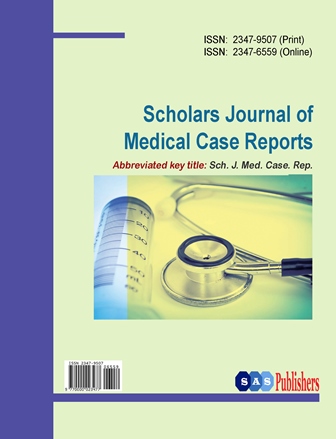+91-9365665504
+91-8724002629
submit@saspublishers.com / saspjournals@gmail.com

An International Publisher for Academic and Scientific Journals
Author Login
Scholars Journal of Medical Case Reports
Journal Home
Description
Editorial Board
Archives
Indexing
Statistics
Title : Scholars Journal of Medical Case Reports
Abbr : Sch J Med Case Rep
ISSN (Online) : 2347-6559
ISSN (Print) : 2347-9507
Discipline : Medical Sciences
Frequency : Monthly
Country : India
Language : English
Abbr : Sch J Med Case Rep
ISSN (Online) : 2347-6559
ISSN (Print) : 2347-9507
Discipline : Medical Sciences
Frequency : Monthly
Country : India
Language : English
10.36347/sjmcr
DOI
DOI
5.3
IMPACT FACTOR
IMPACT FACTOR
Current Issue : Volume-14 - Issue-01 ; 2026
Recently Published Articles
Jan. 10, 2026 | Case Report
Management of Spontaneous 4th and 5th Digit Extensor Rupture in Rheumatoid Arthritis Using Tendon Transfer and Distal Ulna Debridement: A Case Report
Omar MOURAFIQ, Khalil BELKHIAT, Hicham SALAHI, Omar MERGAD
Sch J Med Case Rep | 75-78
DOI : https://doi.org/10.36347/sjmcr.2026.v14i01.016
Jan. 10, 2026 | Case Report
Management of Traumatic Degloving Injury of the Hand: A Case Report
Omar Mourafiq, Abdellatif Benbouha, Khalil Belkhayat, Hicham Salahi, Omar Mergad
Sch J Med Case Rep | 71-74
DOI : https://doi.org/10.36347/sjmcr.2026.v14i01.015
Jan. 10, 2026 | Case Report
Safety of Spinal Anesthesia in A Patient with Kennedy’s Disease: A Case Report
In-Jung Jun, Jun-Seok park, So-Min Ahn
Sch J Med Case Rep | 68-70
DOI : https://doi.org/10.36347/sjmcr.2026.v14i01.014





